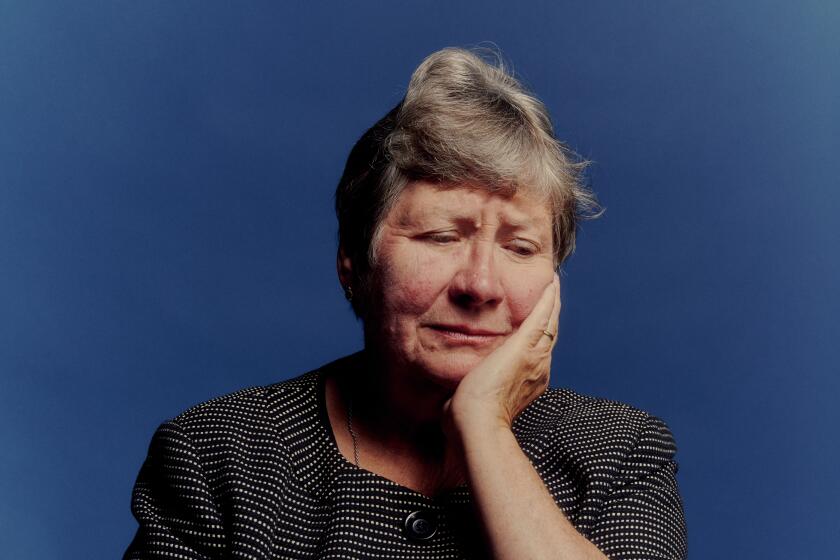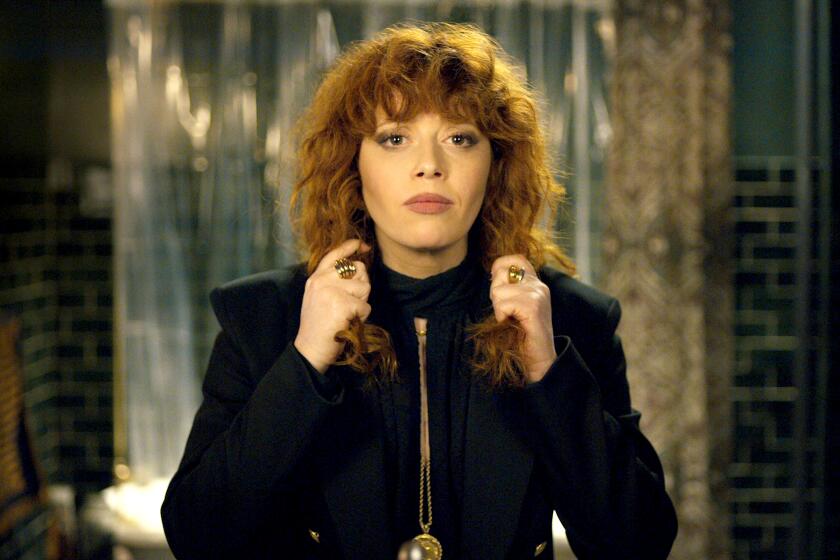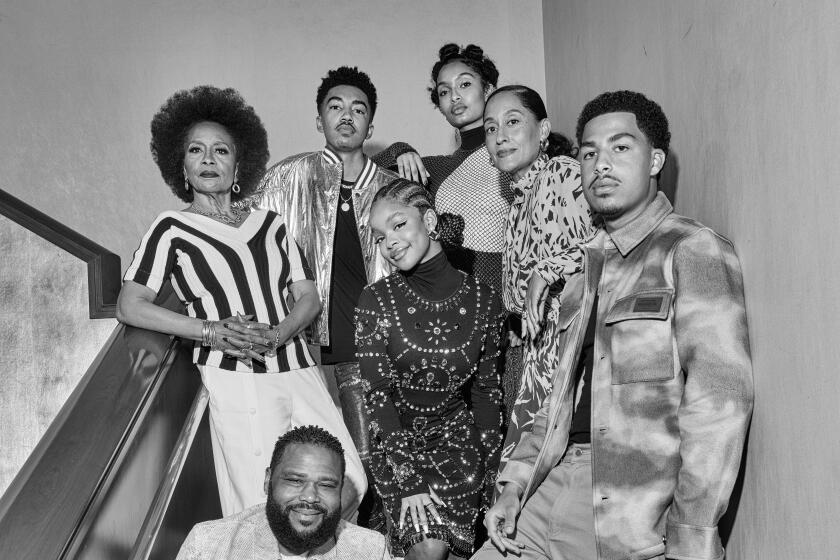TV rarely gets childbirth right. After Roe, the gory truth matters more than ever
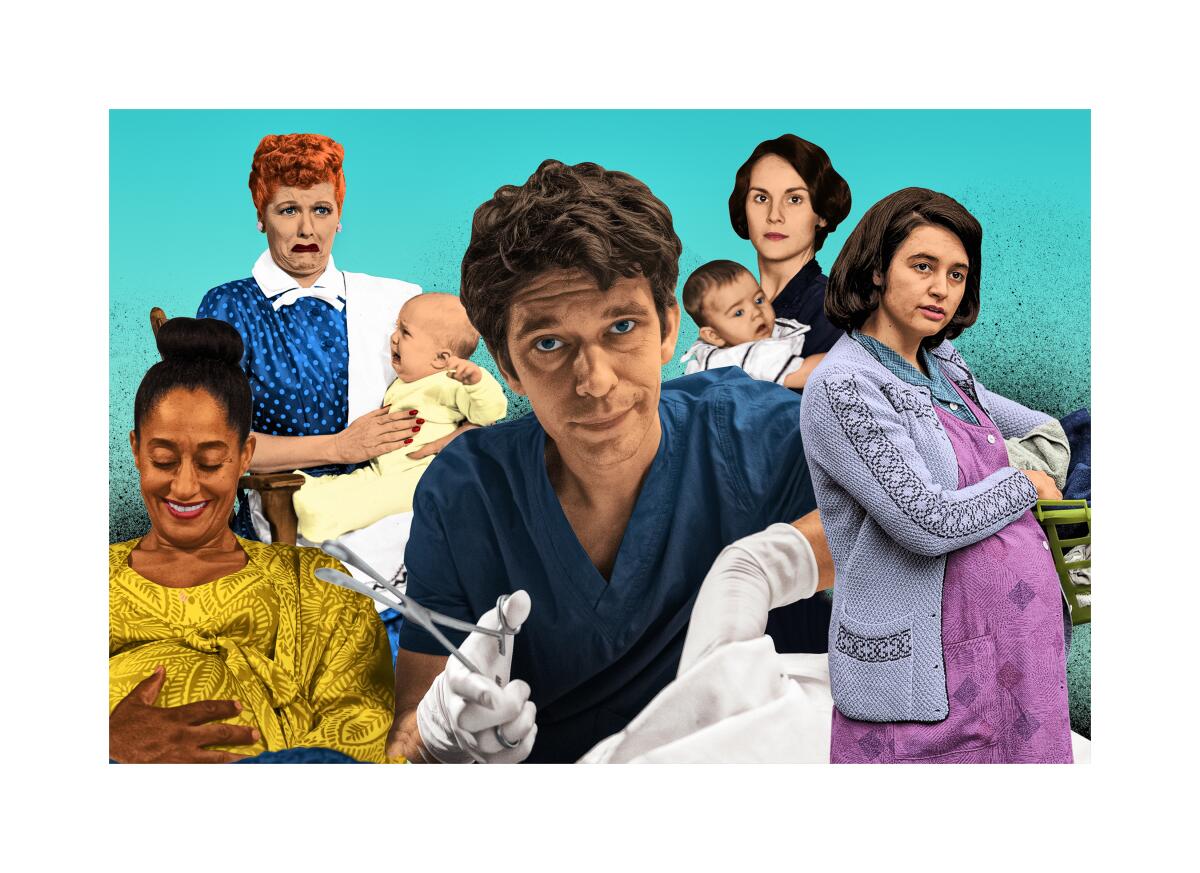
“Bloody show” is a colorful term for the mixture of blood and mucus that indicates the cervix is preparing for labor.
It is one of the many strange, sticky bodily secretions you are likely to encounter for the first time when you become a parent: colostrum (yellowish early breastmilk), meconium (baby’s tar-like first bowel movement), vernix (the creamy white stuff often covering newborns when they’re born — also known, nauseatingly, as “birthing custard”).
I thought of the term again recently as I watched an episode of “This Is Going to Hurt,” a darkly comic TV series following a team of stressed-out doctors and midwives in the obstetrics and gynecology ward of an under-resourced London hospital.
During a particularly chaotic shift, haughty chief consultant Mr. Lockhart (Alex Jennings) is showing off the facilities for a visiting politician and phalanx of reporters. He opens the door to a newly refurbished delivery room — which, unbeknownst to him, has just been used for a water birth — and discovers what looks like the aftermath of a bathtub dismemberment a la “The Sopranos.” Blood cascades across the floor in front of a tub filled with rust-colored water. Soiled linens, unable to soak up the mess, sit discarded in a heap nearby. It is quite a bloody show.
In HBO’s “The Janes,” women who defied abortion laws in pre-Roe Chicago speak out: “The true story is more dramatic than a fictional one.”
Based on a memoir by Adam Kay, “This Is Going to Hurt” features some of the most visceral depictions of labor, pregnancy and reproductive health emergencies ever to grace the small screen. And at a post-Roe moment when Republican lawmakers are rushing to restrict abortion in ways that are likely to imperil women with life-threatening complications and increase the United States’ already high maternal mortality rate, it should be required viewing.
In the dizzying opening sequence, Adam, played with prickly brilliance by Ben Whishaw, finds a pregnant woman in obvious distress in the hospital parking lot and lifts her dress to discover her baby’s prolapsed arm dangling between her legs.
Adam springs into action and, by the time the baby is safely delivered, via C-section, his clothes — even his own pubic hair — are soaked in blood. And that’s just the beginning. Over the course of “This Is Going to Hurt’s” seven episodes (now streaming on AMC+), you will laugh grimly as a woozy doctor passes out during a C-section and lands, face first, in a patient’s open belly. You will hear the word “labia” more than you ever have in your life. You will learn what a placenta looks like, if you don’t already know. And you will understand that even when it is uncomplicated, childbirth is always messy.
“I’m sure there are some people who have absolutely uneventful, easy labors, where they’re able to speak in full sentences the entire time, and look like they’ve just come out of makeup at the end, but that was not my experience,” said Kay, the series’ creator and a former National Health Service doctor, in a recent video chat. “I wanted this to be the one show that doctors and nurses and midwives watched and didn’t go, ’It wouldn’t have been like that.’ We went full throttle on the realism.”
(Although there may be an unusually high rate of complications in “This Is Going to Hurt,” this is not just poetic license: As Kay explains, in the U.K. midwives attend most births and patients only see obstetricians if they are deemed higher risk or complications arise.)
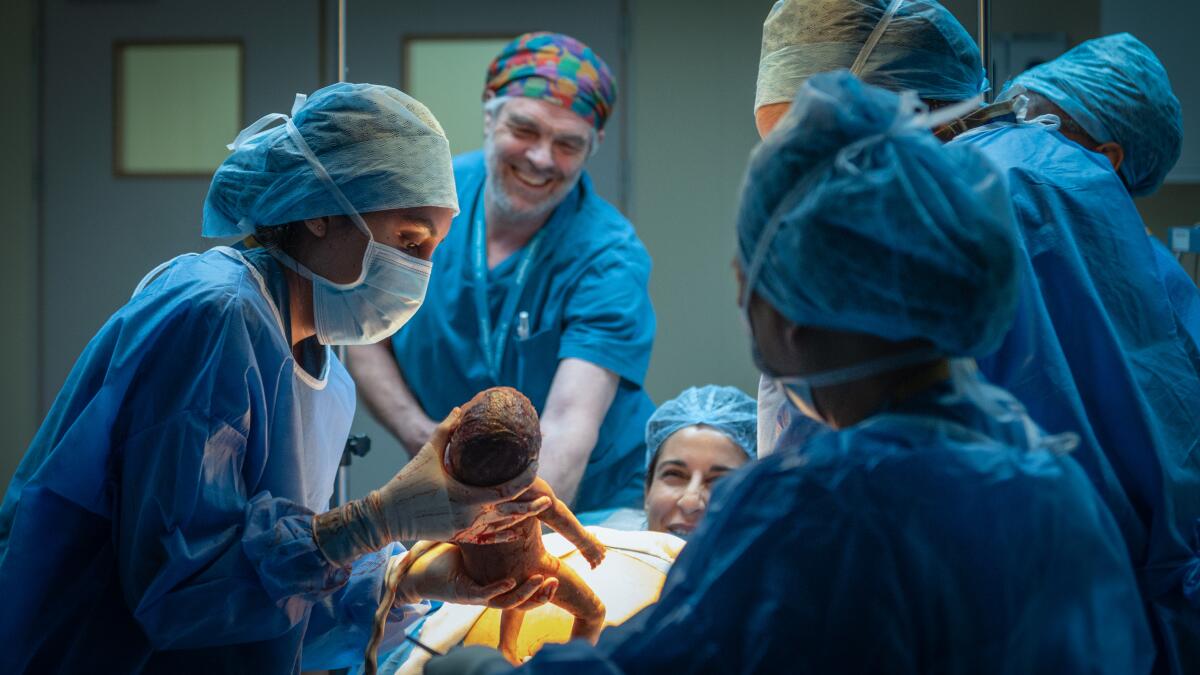
The goal was to show births that were “messy, raw, and real,” said Lucy Forbes, who directed four episodes, including the pilot. “It was very important to me that the births weren’t sanitized and [didn’t feel] cheesy.”
She worked with director of photography Benedict Spence to “escape the washed-out, over-lit look that you usually get in medical dramas,” and was also keen to avoid “the perfect little bundle trope — a clean and pristine baby who looks too old to have just been born being handed to a mother, when in reality everything is sticky and sweaty and bloody.”
Finding a way to make the show, broadcast on the BBC in the U.K., “visceral and truthful but not unpleasant” required constant discussion among the creative team, said Kay: “From working as a doctor, my barometer is totally f—. Nothing looks disgusting to me.”
There were few rules “other than to make sure we showed the audience what it’s really like,” said Forbes. “In reality, doctors are frequently covered in bodily fluids. It soaks through their clothes to their skin and down to their shoes.”
This commitment to verisimilitude led to some darkly humorous moments on set, as when a stuntwoman who had been lying on the floor all day stood up and the blood from her pregnancy belly poured out on the floor. “It was like a scene from ‘The Shining,’” recalled Forbes. “After a very tense day on set the whole cast and crew exploded with laughter.”
We surveyed The Times TV team to come up with a list of the 75 best TV shows you can watch on Netflix. As in, tonight.
And unlike many medical dramas, which use one or two consultants to address a wide array of issues, “This Is Going to Hurt” employed 16 medical advisors with distinct areas of expertise, including midwives, nurses, obstetricians and anesthetists.
To ensure the babies who appear in the show are convincingly tiny, casting agents found parents who were due to give birth while the show was in production and were willing to hire out their newborns. (Other scenes used models and prosthetics created by Millennium FX.)
“This Is Going to Hurt” is the cynical twin of “Call the Midwife,” a period drama about a group of midwives operating in the impoverished East End of London in the 1950s and 1960s. After more than a decade on the BBC, it remains one of the most-watched programs in the U.K., where it airs at a family-friendly hour and must be judicious in its use of blood and gore. (Stateside, new seasons air on PBS and older seasons are available on Netflix.)
Despite these restraints, “Call the Midwife” is refreshingly, even radically matter-of-fact about the reality of inhabiting a reproductive body. With cheerful efficiency, the midwives cycle around the streets of Poplar, collecting urine samples and snipping umbilical cords. They have witnessed, firsthand, virtually every physical and emotional complication related to childbearing, and understand what makes pregnancy so perilous for many of their patients — which may be why, in Season 10, Nurse Trixie (Helen George) speaks out in favor of legalizing abortion. Perhaps most powerful of all, “Call the Midwife” has captured a broad spectrum of birth experiences, some quite remarkable, others long and grueling in unexceptional ways.
The series, based on books by Jennifer Worth, has long since moved beyond its source material. Each season, creator Heidi Thomas researches new storylines by combing through old newspapers and looking at historical data on births, deaths and illness in the borough of London in which the series is set. Statistics can tell a powerful story. As Thomas said during a recent appearance, “A dysentery outbreak in a nursery school — well, if that’s not drama, I don’t know what is.” (The series also has a consultant midwife, Terri Coates.)
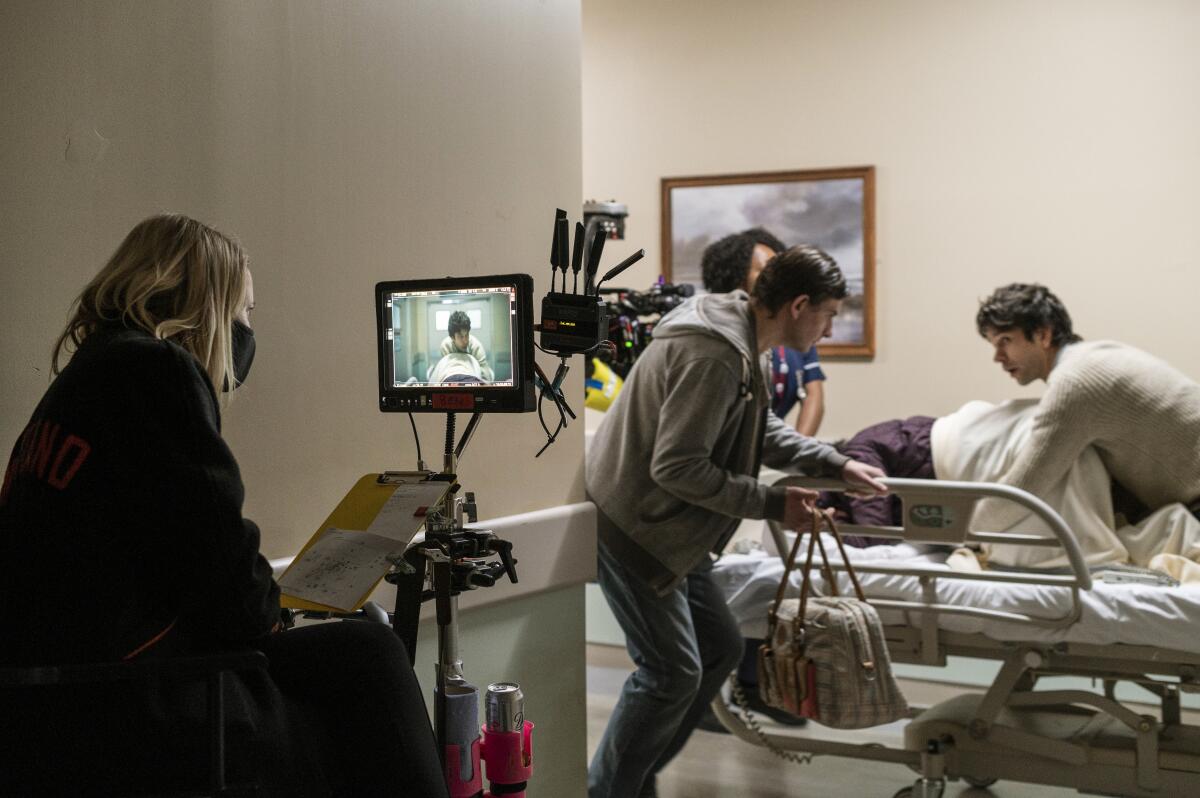
Both “This Is Going to Hurt” and “Call the Midwife” strike a potent contrast with their American counterparts, which have been squeamish about pregnancy dating back to the heyday of “I Love Lucy”: Famously, no one was allowed to use the word when the sitcom introduced a baby storyline to accommodate star Lucille Ball’s real-life pregnancy, instead relying on a host of cloying euphemisms.
Other American sitcoms followed suit, sanitizing the process of bringing new life into the world while playing women’s physical discomfort and hormonal disruptions for laughs. The typical journey went something like this: the expectant mom ate pickles and ice cream for nine months, perhaps dragging her reluctant husband to Lamaze class, until her water broke in dramatic fashion, she pushed a few times and delivered a perfectly clean, enormous newborn. (The website TVTropes.com catalogs dozens of these cliches, including “Three-Month-Old Newborn,” “Panicky Expectant Father,” “Instant Birth: Just Add Labor!”)
A rare exception came in the Season 3 finale of ABC’s “black-ish,” in which Rainbow (Tracee Ellis Ross), pregnant with her fifth child, is induced two months early because of preeclampsia. Though only about 1 in 25 women experience preeclampsia, older women like Rainbow are more likely to experience it, and Black women in the U.S. are three times as likely to die from pregnancy-related complications as their white counterparts. (Creator Kenya Barris drew from his wife’s experience with similar complications.)
Few prime-time dramas have had the chutzpah to take a clear-eyed look at the danger of birth either — until a legendarily gut-wrenching episode of “ER” aired in 1995. Directed by Mimi Leder and written by Lance Gentile, “Love’s Labor Lost” follows the likable, seemingly infallible Dr. Mark Greene (Anthony Edwards) as he performs an emergency C-section on a woman whose preeclampsia he earlier misdiagnosed as a bladder infection. Every possible thing goes wrong until the woman — healthy and beaming at the top of the hour— is dead. 34.4 million people watched the episode when it aired on NBC, and many, especially women, would think about it for years to come, worried they too might end up like the women on “ER” (and, later, like Lady Sybil on “Downton Abbey.”)
After 8 seasons of thorny issues, heated debates and one shelved episode, Kenya Barris, Anthony Anderson and Tracee Ellis Ross say goodbye.
“All my OB colleagues called me the next day and said, ‘Thanks a lot. All my patients have preeclampsia today,” said Gentile, who worked as an ER doctor before getting into TV and had been inspired to write the episode by a colleague who was called to do a C-section late one night when the hospital was short-staffed (his outcome was happier than Greene’s). “As an emergency room doctor, the scariest cases are obstetric catastrophes you deal with on your own without an obstetrician around.”
“Love’s Labor Lost” won multiple Emmy Awards, but it failed to change the way birth was portrayed on American TV screens. The goriest labor has been relegated to period pieces, fantasy or science fiction — shows like “The Knick,” “Game of Thrones,” or “The Walking Dead,” where there is a comfortable distance between audience and subject. Even a medical soap like “Grey’s Anatomy” shows characters giving birth in such extreme, terrifying circumstances — think: kitchen-table C-sections — it feels removed from the more mundane risk of, say, living in a rural area a hundred miles from the nearest obstetrician.
Perhaps as a result of American television’s reluctance to portray childbirth authentically and normalize women’s bodies, neither the political discourse around abortion rights nor the popular understanding of reproductive healthcare has tended to reflect the fact that the United States — and not the kingdom of Westeros — has the highest rate of maternal mortality in the industrial world, with about 20 deaths for every 100,000 births, and that this number has risen in recent years. (In the U.K, the number is closer to 7.) Representation matters because the vast majority of the births witnessed by the average American are the fake kind on TV.
I have given birth twice. Both experiences were happily uncomplicated, despite my “advanced maternal age,” but neither was what a sane person would consider easy or tidy. I have never taken ayahuasca, but I suspect it’s similar to my birthing experience: You go into a room, you puke, you moan, you take off all your clothes in front of strangers and don’t even care, you puke a little more, you come out exhausted but forever changed.
I hope to see something like that on American TV someday. Barf and all.
‘This Is Going to Hurt’
Where: AMC+
When: Any time
Rating: Not Rated
More to Read
The complete guide to home viewing
Get Screen Gab for everything about the TV shows and streaming movies everyone’s talking about.
You may occasionally receive promotional content from the Los Angeles Times.
